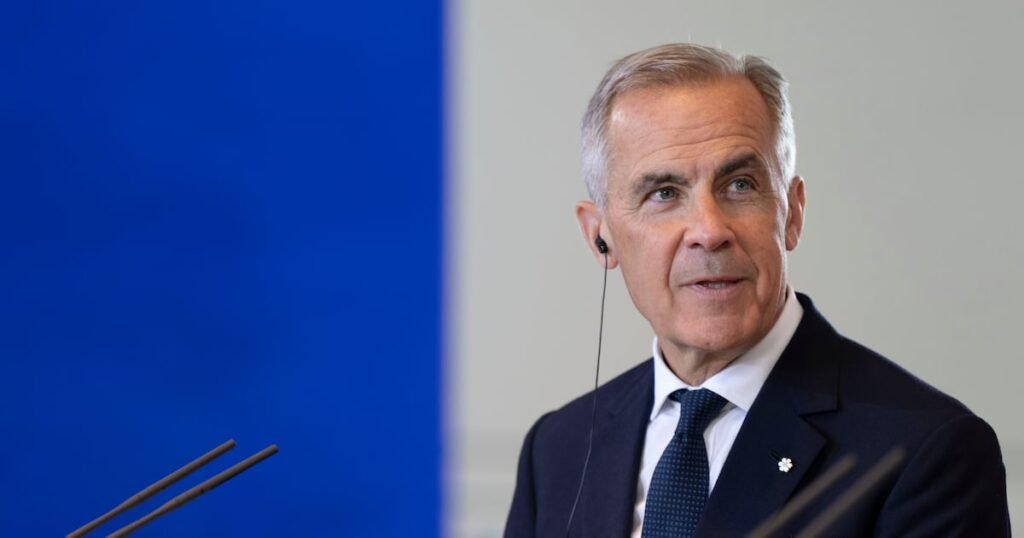Amid his push to strengthen energy and economic ties with Europe, Prime Minister Mark Carney revealed Tuesday that the federal government will imminently be unveiling major new investments in port infrastructure.
“Our government is in the process of unleashing half a trillion dollars of investment in energy infrastructure, port infrastructure, particularly intelligence infrastructure, as well, with AI,” Carney said Tuesday.
Speaking alongside German Chancellor Friedrich Merz in Berlin, the prime minister said the first of those investments will be announced “in the next two weeks” and pointed to building up the Port of Montreal and “a new port, effectively, in Churchill, Manitoba,” as examples.
“Which would open up enormous LNG, plus other opportunities, and other East Coast ports for those critical minerals,” Carney said.
“There is a lot happening. It’s the number one focus of this government— is to build that infrastructure, and particularly infrastructure that helps us deepen our partnership with European partners and particularly Germany.”
Carney’s comments came in response to a question of what Canada could realistically offer European countries in terms of energy, given the state of the development of ports and pipelines in this country.
“There’s a huge range of immediate opportunities with respect to critical metals and minerals, and there are medium-term opportunities with respect to all forms of energy, including LNG and hydrogen,” Carney said.
On Tuesday, Canada and Germany signed a “Joint Declaration of Intent to deepen co-operation” on critical minerals.
While the prime minister didn’t explicitly link the looming announcement with his domestic efforts to develop nation-building projects through the now-passed Bill C-5, the federal government has vowed that the new office to approve major energy and infrastructure projects, will be operational by Labour Day.
‘Tremendous opportunity’ minister says
Pressed for details on the prime minister’s comments, Energy and Natural Resources Minister Tim Hodgson told reporters travelling with the Canadian delegation that the Port of Montreal “is a critical piece of infrastructure for expanding trade, particularly with Europe.”
“It’s a port that we will be very focused on seeing expanded, and I think it’s one of the projects that will get talked about.”
And as for the Port of Churchill, the minister called it “a tremendous opportunity,” for the export of more agricultural products, critical minerals, and potentially natural gas.
“It’s an underutilized port today,” Hodgson said. “And there are proponents here today who are interested in that, who are talking to potential German customers about that.”
“I think what the Prime Minister was referring to is there seems to be a desire on the part of Germany to buy our natural gas, and we have a desire from proponents, a province, and First Nations to develop that for German customers,” he continued.
This messaging marks a stark contrast to former prime minister Justin Trudeau seeming to question the “business case” for pursuing LNG developments, while standing alongside Germany’s then-chancellor Olaf Scholz, in 2022.
Speaking to CTV News earlier this month, Hodgson expressed confidence in there being a market for Canadian liquified natural gas, and stated Canadians can expect to start seeing “rolling” announcements of new major project approvals – energy and otherwise – as of early fall.
Asked Tuesday what the timeline could be for building the kind of port and pipeline infrastructure that would allow Canada to be able to sell and as much as Europeans want to buy, Hodgson couldn’t say.
“I’m not an engineer. I think the goal, and what I’ve seen the proponents talking about, is being able to ship in as little as five years,” he said.
Canada has one major LNG export terminal up and running — LNG Canada, located in Kitimat, B.C. — which just began shipping Canadian gas in June of this year. There are currently six other LNG export projects in the works.
With files from CTV News’ Abigail Bimman and Spencer Van Dyk

